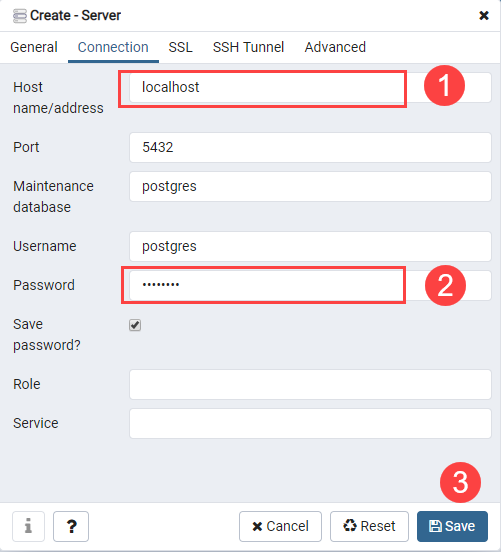
This is likely not what you want, so in order to restrict global access to the postgres user, change the following line: The defaults pg_hba.conf allow any local user to connect as any database user, including the database superuser. Restricts access rights to the database superuser by default This is why find and locate are not finding the configuration files. Note: By default, this folder will not be browsable or searchable by a regular user. This folder also houses the other main configuration files, including the pg_hba.conf which defines authentication settings, for both local users and other hosts ones. This file is located in the data directory of the server, typically /var/lib/postgres/data. The PostgreSQL database server configuration file is nf. There are of course many more meta-commands, but these should help you get started. Show summary information about all tables in the current database: List all users and their permission levels: Use the -d option to connect to the database you created (without specifying a database, psql will try to access a database that matches your username). Start the primary database shell, psql, where you can do all your creation of databases/tables, deletion, set permissions, and run raw SQL commands.

Familiarize with PostgreSQL Access the database shellīecome the postgres user. Tip: If you did not grant your new user database creation privileges, add -U postgres to the previous command. If these are the kind of lines you see, then the process succeeded. Pg_ctl -D /var/lib/postgres/data -l logfile start You can now start the database server using: auth-local and -auth-host, the next time you run initdb. You can change this by editing pg_hba.conf or using the option -A, or WARNING: enabling "trust" authentication for local connections Performing post-bootstrap initialization. Selecting dynamic shared memory implementation. The default text search configuration will be set to "english".įixing permissions on existing directory /var/lib/postgres/data. The default database encoding has accordingly been set to "UTF8". The database cluster will be initialized with locale "C.UTF-8". This user must also own the server process. The files belonging to this database system will be owned by user "postgres". Many lines should now appear on the screen with several ending by. $ initdb -locale=C.UTF-8 -encoding=UTF8 -D /var/lib/postgres/data -data-checksums For more options, see initdb -help and official documentation.You can use -auth-local=peer -auth-host=scram-sha-256 for safer authentication methods. The trust authentication method is used by default, meaning that anyone on the host can connect as any database user.(Once the database is up, you can check if it is enabled with $ psql -c "SHOW data_checksums".) Read #Enable data checksumming for more information. If your data directory resides on a file system without data checksumming, you may wish to enable PostgreSQL's built-in checksumming for increased integrity guarantees - add the -data-checksums argument to do so.Note: Using a locale other than C.UTF-8, C, POSIX or ucs_basic can result in a collation version mismatch that will require reindexing if the library providing the locale ( glibc or icu) gets updated.


 0 kommentar(er)
0 kommentar(er)
